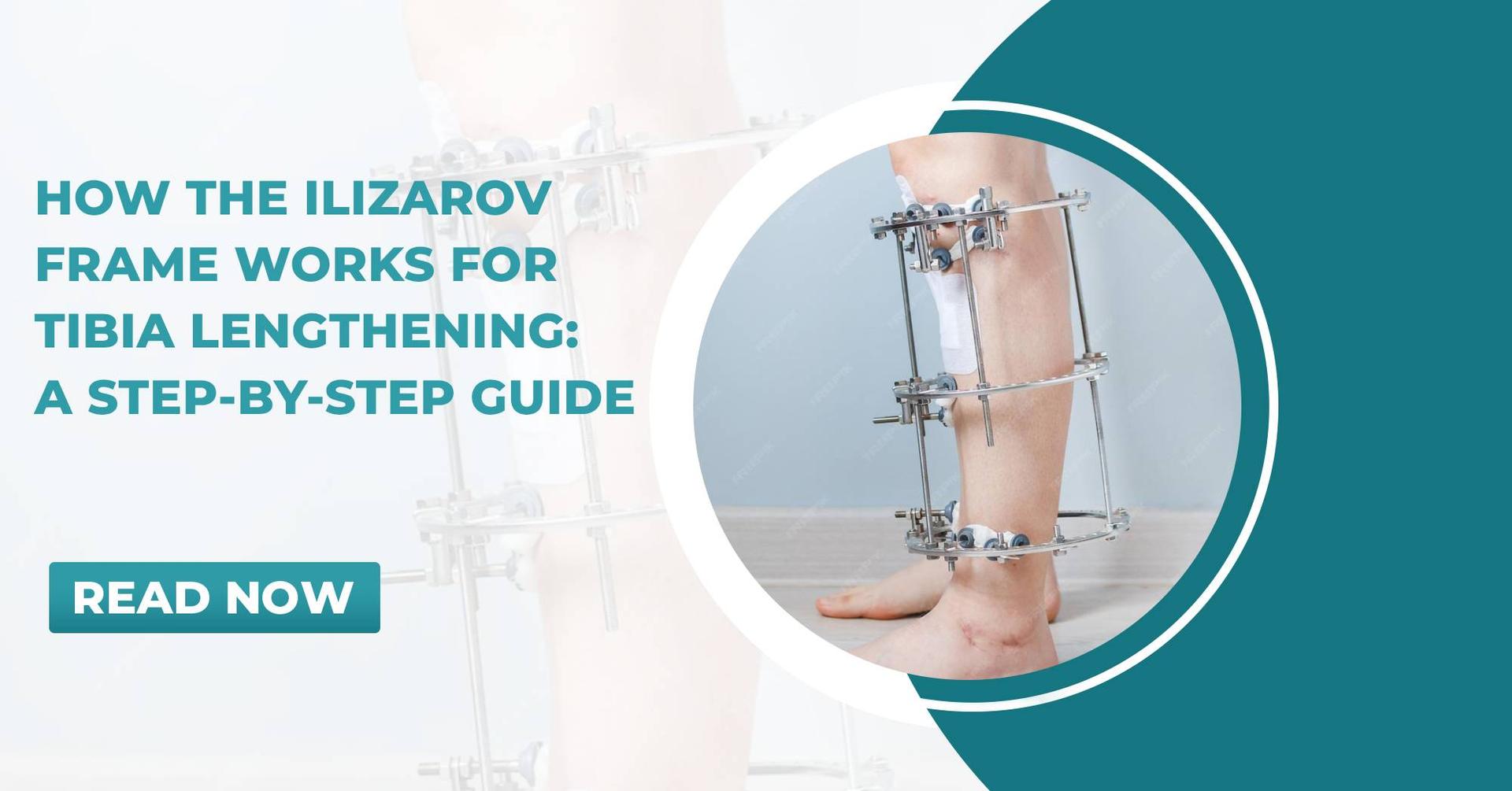
How the Ilizarov Frame Works for Tibia Lengthening: A Step-by-Step Guide
Tibia lengthening surgery has become a life-changing option for individuals looking to increase their height or correct leg length discrepancies. Among the various techniques available, the Ilizarov Frame remains one of the most reliable and time-tested methods used in orthopedic surgery. But how exactly does it work?
In this blog, we’ll explore how the Ilizarov Frame functions during tibia lengthening, step by step. From surgery preparation to bone regeneration and recovery, this guide will walk you through the complete process in simple and clear terms.
What Is the Ilizarov Frame?
The Ilizarov Frame is a circular external fixator developed by Russian orthopedic surgeon Dr. Gavriil Ilizarov in the 1950s. It is composed of rings, rods, wires, and adjustable screws that are secured around the limb from the outside.
Unlike internal devices (like intramedullary nails), the Ilizarov Frame remains outside the body, connected to the bone using thin metal wires or pins that pass through the skin and bone. It allows precise control over the lengthening process by adjusting the frame from outside the leg.
The framework operates based on the principle of distraction osteogenesis, a natural process in which bone regenerates when slowly and gradually pulled apart under controlled conditions.
Why Is the Tibia Lengthened Using the Ilizarov Frame?
The tibia, or shin bone, is one of the two bones in the lower leg and is ideal for lengthening due to its strong structure and location. It’s commonly chosen for:
-
Cosmetic height increase
-
Correcting limb length discrepancy
-
Treating birth defects or post-injury deformities
Using the Ilizarov frame for tibia lengthening is particularly effective when:
-
Bone deformities are involved
-
Internal lengthening devices aren’t suitable
-
A more cost-effective option is preferred
-
High precision is required in bone alignment
Step-by-Step Process of Tibia Lengthening Using Ilizarov Frame
1. Pre-Surgery Assessment
Before surgery, patients undergo:
-
Full physical and orthopedic evaluation
-
Leg length X-rays and CT scans
-
Blood tests and medical fitness checks
The doctor will also explain the full procedure, recovery timeline, and expected height increase (typically 5–8 cm).
2. Surgery and Frame Attachment
The tibia bone is cut using a minimally invasive technique called corticotomy, which preserves blood vessels and bone marrow. After the bone cut:
-
The Ilizarov frame is carefully positioned around the leg
-
Thin wires and pins are passed through the bone and attached to circular metal rings
-
The frame is adjusted to ensure perfect alignment
Surgery takes about 2–3 hours and is usually done under general or spinal anaesthesia.
3. Latency Period
After surgery, there is a rest period of about 5–7 days. This allows the soft tissues and bone to start healing before any lengthening begins.
4. Distraction Phase (Lengthening Begins)
This is where the magic happens:
-
The patient or caregiver begins to turn the adjustable screws on the frame
-
The bone is slowly pulled apart at a rate of ~1 mm per day
-
New bone starts to grow in the gap between the cut segments
This phase usually lasts 1–2 months, depending on the desired length.
5. Consolidation Phase
Once the target length is achieved, the distraction stops. The focus now shifts to hardening the new bone (called regenerate bone).
-
No further lengthening is done
-
The Ilizarov frame remains in place to support the leg
-
This phase can take 2–3 times longer than the distraction phase
Read more: Cross-Limb Lengthening Surgery: A Balanced Way to Increase Height
How Bone Regrowth Happens – Distraction Osteogenesis Explained
Distraction osteogenesis is a biological process where:
-
The bone is cut but kept stable
-
Gradual pulling creates a controlled gap
-
New tissue (cartilage, then bone) forms in the gap
-
Over time, this regenerated bone becomes fully strong and functional
This process mimics natural bone growth, which makes it safe and permanent when done correctly.
Benefits of the Ilizarov Method for Tibia Lengthening
-
Precise control over lengthening and alignment
-
Can correct deformities along with increasing height
-
Useful in complex or previously failed surgeries
-
No internal implant, less risk of complications
-
More affordable than internal devices like PRECICE
-
Suitable for children and adults alike
Postoperative Care and Rehabilitation
Recovery is a crucial part of success:
-
Daily cleaning of pin sites to prevent infection
-
Physical therapy to maintain joint movement and muscle strength
-
Use of crutches or a walker to stay mobile
-
Regular check-ups and X-rays to monitor bone growth
-
Support from doctors, physiotherapists, and caregivers
At Heights Plus, patients also receive personalized rehabilitation plans to speed up their recovery.
Read more: Top 10 Questions to Ask Before Limb Lengthening Surgery
Realistic Expectations and Final Outcome
Most patients gain 5–8 cm in height and experience:
-
Better posture and balance
-
Improved confidence
-
Long-term satisfaction
-
Minor scarring (which can fade over time)
However, full recovery, including walking and return to normal life, may take 6 to 12 months. Patience and discipline are key.
Conclusion
The Ilizarov Frame is a powerful and proven method for tibia lengthening. Though it may look old-fashioned compared to modern internal devices, its precision, adaptability, and success rate continue to make it a top choice, especially in expert hands.
At Heights Plus, our experienced orthopedic team specializes in Ilizarov-based limb lengthening, ensuring safe, personalized care and support throughout your journey.
Frequently Asked Questions (FAQs)
Q1: Is the Ilizarov Frame painful?
Mild discomfort is expected during the lengthening phase, but pain is manageable with medication and physiotherapy.
Q2: Can I walk while wearing the frame?
Yes, most patients use a walker or crutches. Gradual weight-bearing is encouraged under supervision.
Q3: Is the result permanent?
Yes. Once the new bone solidifies, the height gain is permanent.
Q4: How long does the frame stay on?
Typically 6–9 months, depending on the length gained and bone healing speed.
Content Created By:

CyberBizz Technologies
Team - Content Curator